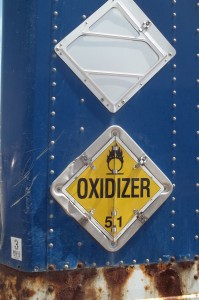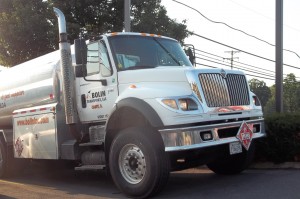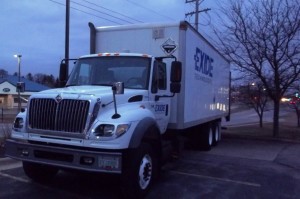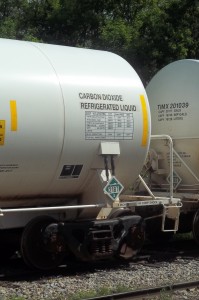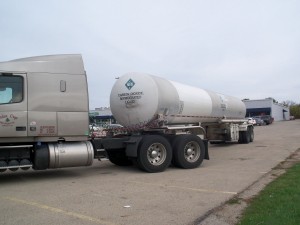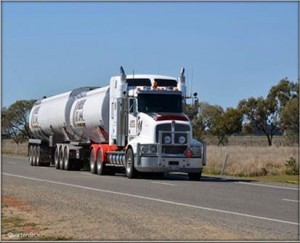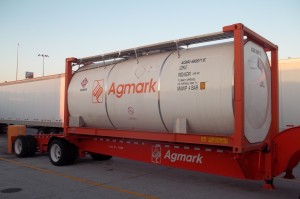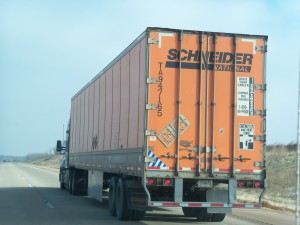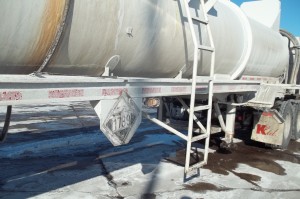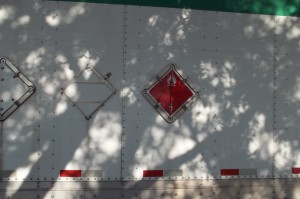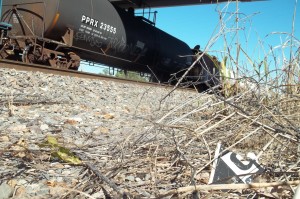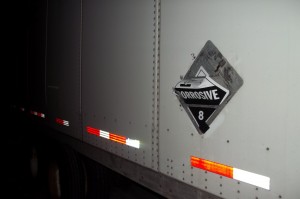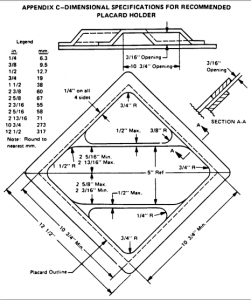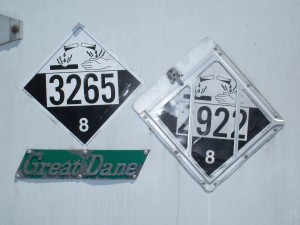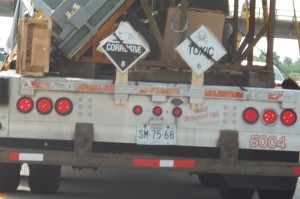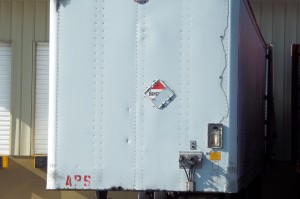There are exceptions, but in most cases the transportation in commerce of any quantity of a hazardous material will require the display of placards on each side and each end of each of the following:
- Bulk packaging
- Freight container
- Unit load device
- Transport vehicle; this includes a motor vehicle (see below for a definition)
- Rail car
When it comes to placards, compliance with the Hazardous Material Regulations (HMR) requires three things:
- Determine what placards are required pursuant to 49 CFR 172.504.
- Select a placard of the correct specifications at 49 CFR 172.519.
- Display the placard properly according to the requirements of 49 CFR 172.516.
This article will address the requirements of 49 CFR 172.516 Visibility and display of placards.
Each placard on a motor vehicle or rail car (note the absence here of inclusion of a bulk packaging, freight container, or unit load device) must be clearly visible from the direction it faces. Since a motor vehicle or rail car is required to be placarded on each side and each end, that means that a placard must be visible to a person facing each side and each end. This does not require the placard to be on the outer perimeter or furthest extremity of the motor vehicle or rail car (picture 1), but merely visible from each direction (picture 2). But what about placards on the ends of rail cars coupled together (picture 3)? And what about the placard on the front of a van trailer or cargo tank of a tractor-trailer combination (picture 4)? Sure they’re there, but do they comply with §172.516(a)? The answer is yes. Why? (1) This statement from the HMR immediately following the requirement for a placard to be clearly visible from the direction it faces: “…except from the direction of another transport vehicle or rail car to which the motor vehicle or rail car is coupled.” (2) The definition of a transport vehicle from §171.8:
Transport vehicle means a cargo-carrying vehicle such as an automobile, van, tractor, truck, semitrailer, tank car or rail car used for the transportation of cargo by any mode. Each cargo-carrying body (trailer, rail car, etc.) is a separate transport vehicle.
And (3) this letter of interpretation from the PHMSA which confirms that the placard on a cargo body does not have to be visible from the direction of another transport vehicle, including the truck/tractor (05-0063).
So, the placard display in pictures 3 & 4 is correct, though the placard display in picture 5 is also allowed, and preferred if the placards on the front of the cargo body are obstructed by the truck/tractor (08-0098).
This requirement may be met by the placards displayed on a freight container or portable tank loaded on a motor vehicle or rail car as long as they are visible from each side and each end (picture 6).
Each placard on a transport vehicle, bulk packaging, freight container, or aircraft unit load device must be:
- Securely attached or placed in a placard holder (recommended specifications in appendix C of part 172).
- Located clear of appurtenances and devices such as ladders, pipes, doors, and tarpaulins. Take a look at picture 7 and tell me if you think a placard placed in this location would meet the requirements of §172.516(c)(2).
- Located away from tire spray. The PHMSA/USDOT understands the difficulty of complying with this (see picture 8), that’s why §172.516(c)(3) includes the pre-condition, “As far as practicable…”
- Be located away from any marking – such as advertising – that will substantially lessen its effectiveness. A placard must be at least 3 inches (76.0 mm) away from such marking.
- Words or identification number (if either are required) must be displayed horizontally, reading left to right. See picture 9 for an example of an acceptable placard without word or identification number. Will the placard holder in picture 10 display a placard reading left to right?
- Maintained by the Carrier in good condition so that it is able to communicate the hazard of the material. Pictures 11 & 12 show potential violations of this regulation.
- Be affixed to a background of contrasting color, or must have a dotted or solid line outer border which contrasts with the background color.
Appendix C to Part 172 contains the recommended specifications for a placard holder. Compare the orientation of the recommended specification for the placard holder (picture 13) versus how it is displayed in picture 14. Note how the support bars obstruct the display of the identification numbers when oriented vertically.
Also, except for the use of a placard holder similar to the one in appendix C (picture 13), the means of securing a placard may not obscure any part of its surface other than the borders. Is this a problem in picture 15?
A hinged placard or placard holder is acceptable as long as the required format, color, and legibility of the placard are maintained. Compare and contrast the compliance status of picture 16 (good!) versus picture 17 (bad!).
- Picture 1 – Display of placard on outer perimeter of vehicle
- Picture 2 – Proper display of placard even though not on the outer perimeter of the vehicle.
- Picture 3 – Placard displayed on ends of coupled rail cars.
- Picture 4 – Placard display on the front of a cargo tank, facing the tractor/truck
- Picture 6 – Display of placards on portable tank loaded on motor vehicle.
- Picture 7 – Is this placard holder, “located clear of appurtenances…”?
- Picture 8 – “As far as practicable…”
- Picture 9 – Compliant display of a placard without words or ID #
- Picture 10 – Words or ID # on a placard must read right-to-left
- Picture 11 – Fragment of placard from rail car
- Picture 12 – Placards must be maintained by the Carrier
- Picture 13 – Recommended specification for placard holder
- Picture 15 – Improper securement of a placard
- Picture 16 – Proper display of a hinged placard.
- Picture 17 – Improper display of a hinged placard
Confused? Please contact me if you have any questions regarding the display of placards when you transport or offer for transport a hazardous material or dangerous good.
